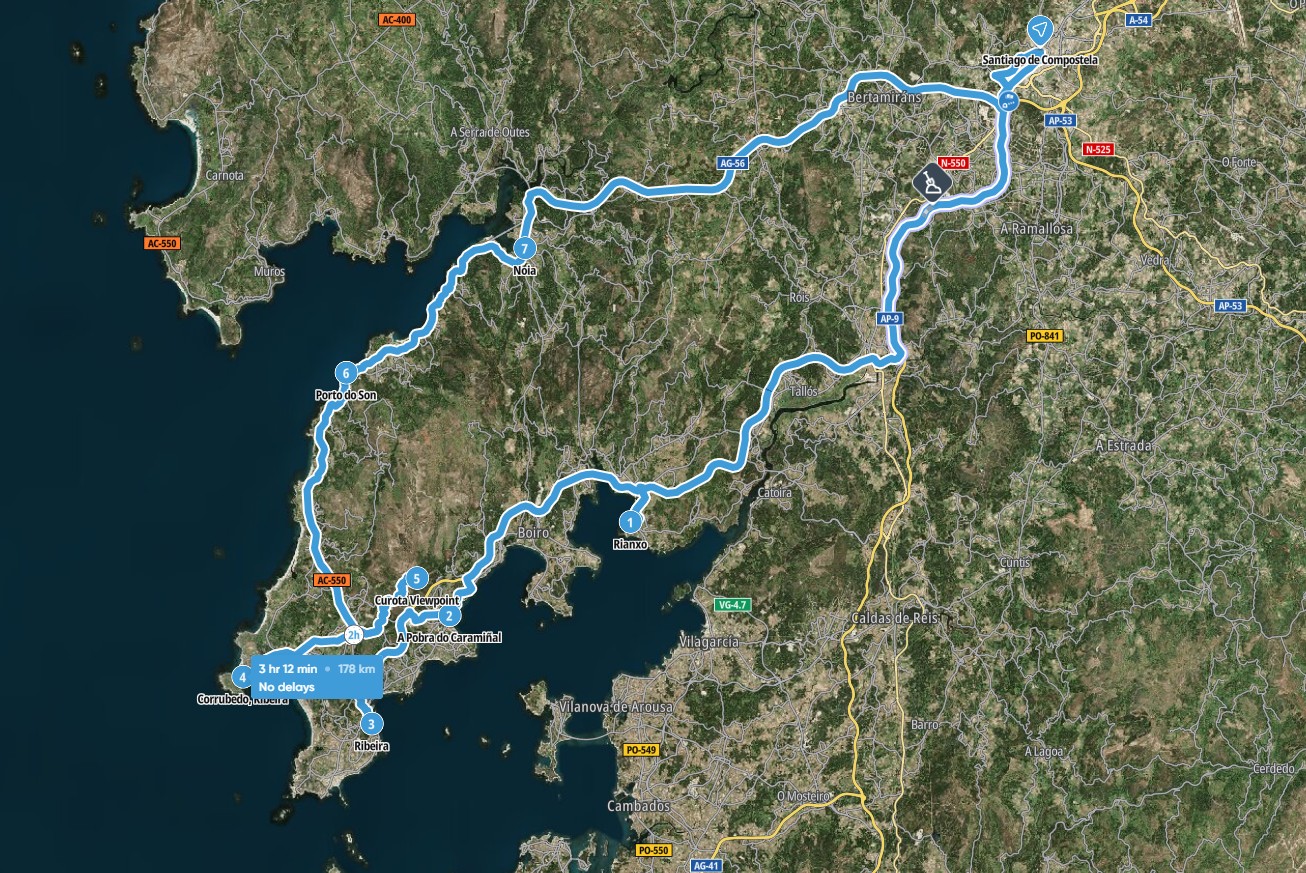Santiago - Rianxo
SANTIAGO – RIANXO · 45 KM
The coastal municipality of Rianxo sits on the southern edge of the province of A Coruña, bordering the province of Pontevedra. It lies roughly 45 kilometres from the city of Santiago de Compostela.
Monuments and points of interest
- Chapel of Our Lady of Guadalupe, dating from the 16th century.
- Visit the Writers' House in town.
- Visit Rafael Dieste square and the Martelo manor.
- Stroll along the town's waterfront area.
- Festivities in honour of the Virgin of Guadalupe, deeply rooted in the area.
- Feast of the Virgin of Carmen, held on 16 July, patron saint of sailors.
- Feast of San Xoán, celebrated on 24 June.
Rianxo was the birthplace of great and illustrious Galician writers. Among them is Manuel Antonio, who crossed different meridians as a pilot under sail, reflecting in his poems the cosmic grandeur and melancholy of the Atlantic. He died in 1929 in the prime of youth. Another writer from Rianxo was Alfonso Daniel Castelao, the son of sailors and one of the foremost leaders of Galician nationalism.
